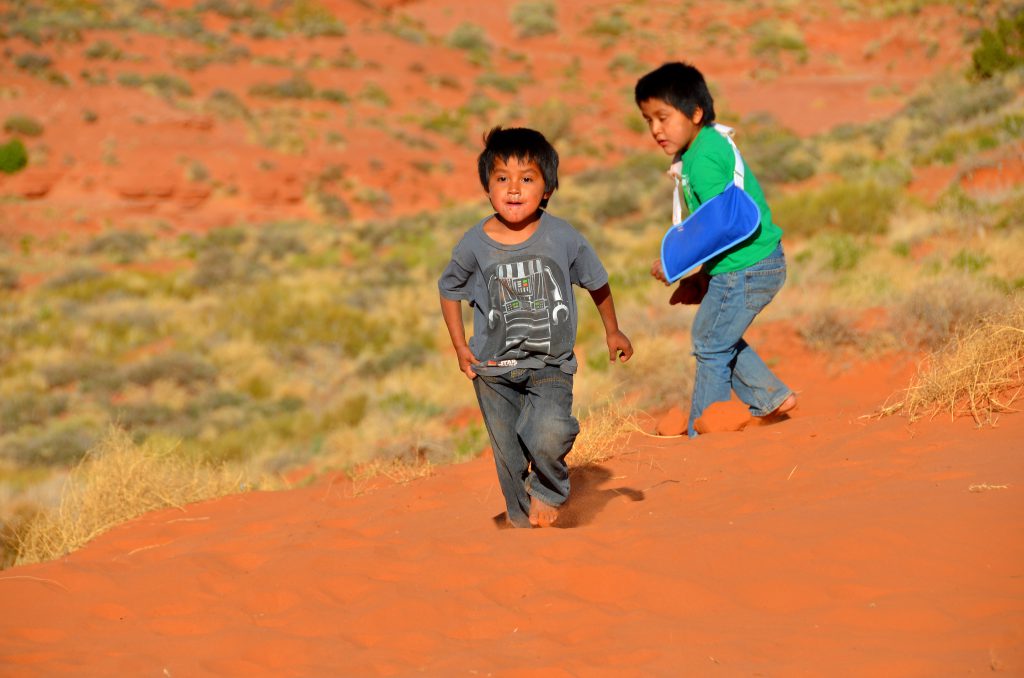More than 2 million children in the United States benefit from the Child Tax Credit that was established in 1997, within the Taxpayer Relief Act. The states of California, Colorado, Idaho, Maine, Maryland, Massachusetts, New Mexico, New York, and Oklahoma, alongside the federal government, offer financial credits that help families in need. (Reinicke C, 2021)
The amount is determined based on three factors: number of children, marital status, and income level. It is important to note that this is only a temporary act that is set to expire in 2025. (National Conference of State Legislature, 2022) Unless the United States politicians enhance the credit, it is estimated that 10 million children will slide back into poverty. (Reinicke C, 2021)
What is the Child Tax Credit program?
The Child Tax program is a part of the American Rescue Plan that offers financial aid to families with low income. Households with children, who are no more than seventeen years old, get a monthly allowance that ranges from $250 to $300. In order to qualify for the payment, families should fill out the tax return forms, and automatically receive the funds. Even if they don’t make enough money to file for taxes, they are still eligible to apply for the tax credit program. (The White House, n.d.)
The government has enabled an easy sign-up process for all working families that have no means to take care of their children. Single parents who make less than $112,500 and low-income families can easily qualify for the tax credit. That means that parents used to receive $2000 per child in the past, before the amount has been increased in 2021. According to the government, this yearly sum of $3600 significantly helps reduce poverty and improve children’s lives. (The White House, n.d.)
Child Tax Credit in 2022
In 2021, The Child Tax Credit program introduced a myriad of changes to help support children not only in the United States but also in Puerto Rico. Parents were able to claim financial aid for children until the age of seventeen, as the government also expanded the range of ages. Apart from increasing the maximum amount from $2000 to $3600, they have also made it fully refundable. Low-income families also received advance payments to help them bring up their children. (U.S. Department of the Treasury, n.d.)
Sadly for all the families in need, Congress failed to extend the act, and instead of the increased amount, parents and guardians had to settle for $2000 in these difficult times of soaring inflation. As only the children below the age of sixteen were eligible to receive the funds, it again left families with one-year older teenagers in despair. According to the Center on Budget and Policy Priorities, last year’s funds, “reduced child poverty in the United States by around 40%.” (Gittins W, 2022) In 2022, nine out of ten parents reported struggling to buy food for their children. More than 45% claim that last year’s checks “made a huge difference for their families.” (Parents Together Action, 2022)
Mixed immigration-status families without documents

In the United States alone there are more than 9 million children who live in poverty. The Child Tax Credit program is of crucial importance for families who don’t have the means to take care of their children. Refugees are unfairly excluded from the legislative as, in most cases, at least one parent doesn’t have valid documents. More than 2 million immigrant children and 1.6 million American children depend on this money for bare survival. (Center for Immigration Studies, 2021)
There is a strong need to end child poverty in the United States and enhance children’s rights. Most of these children are American citizens who lose a fair advantage of living a happy childhood. Unless they qualify for a Social Security Number, their immigrant parents have their hands tied. “The number of refugees settling in the United States has increased dramatically in recent decades,” and most of these children are younger than 17, which makes them eligible for the program. (Migration Policy Institute, 2019)
In the Convention on the Rights of the Child from 1989, it is clearly stated that, “State Parties recognize the right of the child to the enjoyment of the highest attainable standards of health and education.” (UNICEF, 1990) This is precisely why the government should find a way to include marginalized families with underprivileged children in the Child Tax Credit system.
How can cancelling the Child Tax Credit push 10 million children back into poverty?
The changes made in 2021 enabled parents without income to support their children. However, one year later, 65 million kids in the country are in for a rough time, once again. It is estimated that 27 million children, mostly of African-American and South American origin, will lose access to financial funds, as the government has failed to extend the act. (Reinicke C, 2021)
According to the last year’s survey, children had access to better food, and parents had more time to work. Consequently, child poverty, along with child undernourishment and malnutrition was reduced by 8.4%. Some families reported losing thousands of dollars of child care credits in 2022. (Reinicke C, 2021) Although some families still qualify for the program, this is still a step backwards for the children.
Helping children realize their rights to education, safety, and protection
There are close to 12 million deprived children in the United States. Since the government spends less money than other developed countries on child care, more than 40% of the children spend a minimum of one year living in impoverished conditions before they come of age. (Children International, n.d.)
Enhancing the social protection programs in the United States can help families bring up healthy and educated children. As the number of poverty-stricken households increases, governmental bodies should put in place more effective policies that include all parts of society. Once the children gain access to food and education, the parents will be able to focus on work and improve living conditions. That way we can create a healthy cycle that will result in a more productive society and individual happiness.

We, here at Humanium, care deeply about the children and families affected by poverty. Reducing poverty has been the main goal of numerous of our projects, specifically those in India and Rwanda. If you want to join our cause to reduce child poverty and strengthen children’s right to education, please consider sponsoring a child, making a donation, or becoming a volunteer on our projects. We welcome everyone who is as excited and passionate about helping children live more prosperous lives.
Written by Lidija Misic
Bibliography:
Children International, Child Poverty in the U.S. (n.d.) Retrieved from: https://www.children.org/global-poverty/global-poverty-facts/facts-about-poverty-in-usa, accessed on June 6, 2022
Child Tax Credit Overview (2022). Retrieved from: https://www.ncsl.org/research/human-services/child-tax-credit-overview.aspx, accessed on June 5, 2022
Gittins, W. (2022) $2,000 Child Tax Credit 2022: who is eligible for payment? Retrieved from: https://en.as.com/latest_news/2000-child-tax-credit-2022-who-is-eligible-for-payment-n/, accessed on June 5, 2022
Migration Policy Institute, Children in U.S. Immigrant Families (2019) Retrieved from: https://www.migrationpolicy.org/programs/data-hub/charts/children-immigrant-families, accessed on June 6, 2022
Parents Together Action, Survey Reveals Families in Serious Financial Crisis With Rising Prices and No Monthly Child Tax Credit Payments in Sight (2022). Retrieved from: https://parentstogetheraction.org/2022/05/10/survey-reveals-families-in-serious-financial-crisis-with-rising-prices-and-no-monthly-child-tax-credit-payments-in-sight/, accessed on June 5, 2022
Reinicke, C. (2021) 10 million children will fall back into poverty when the enhanced child tax credit ends. Retrieved from: https://www.cnbc.com/2021/12/20/child-tax-credit-ending-will-push-10-million-kids-back-into-poverty-.html, accessed on June 5, 2022
Suro R, and Findling H, Center for Immigration Studies (2021) The Equality for Immigrants: The Indispensable Ingredient for Remedying Child Poverty in the United States. Retrieved from: https://cmsny.org/how-us-tax-policy-excludes-one-in-six-us-citizen-children-from-poverty-fighting-tax-credits/, accessed on June 6, 2022
The White House (n.d) The child tax credit. Retrieved from: https://www.whitehouse.gov/child-tax-credit/, accessed on June 5, 2022
UNICEF, Conventions on the Rights of the Child (1990) Retrieved from: https://www.unicef.org/child-rights-convention/convention-text, accessed on June 6, 2022
U.S. Department of the Treasury (n.d.) Child Tax Credit. Retrieved from: https://home.treasury.gov/policy-issues/coronavirus/assistance-for-american-families-and-workers/child-tax-credit#:~:text=File%20your%20taxes%20to%20get,the%202021%20Child%20Tax%20Credit.&text=In%20addition%2C%20the%20American%20Rescue,Rico%20and%20the%20U.S.%20Territories, accessed on June 5, 2022


